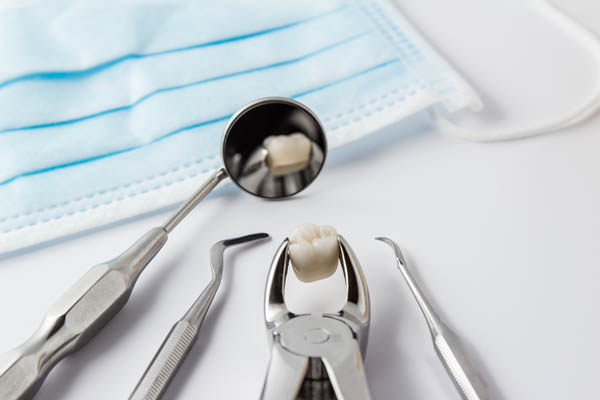Eating After a Tooth Extraction
A may be necessary if the tooth is too decayed to be repaired. After the tooth has been extracted, it is important to allow the area to heal completely. Eating the right foods can help speed healing and avoid any complications. Read on to discover the right foods for you.
Eating
The reason that dentists tell patients to avoid hard foods after a tooth extraction is because hard foods can dislodge the blood clot and cause more pain in the area. If the blood clot is dislodged, raw nerve endings will be exposed in the area. This can limit the amount of blood flowing to the area.
When eating foods that require some chewing, such as mashed potatoes, patients should try to chew on the side opposite from where the tooth was extracted.
Foods to eat after a tooth extraction
Patients should stick with soft foods after a tooth extraction. Depending on where the tooth was located and the condition of the surrounding teeth, the dentist will advise a patient on how long to eat soft foods. A few foods that patients can eat after tooth extractions include:
- Yogurt
- Smoothies
- Mashed potatoes
- Milkshakes
- Applesauce
- Pureed vegetables
- Cool to lukewarm soup
Because the cold can help minimize swelling, ice cream is a good choice. Patients should choose an ice cream without any nuts or other hard foods.
After a few days, patients can move on to foods that require a bit more chewing, such as scrambled eggs. Eggs are high in protein and can help the patient feel less hungry after a few days of yogurt and applesauce. It is important to make sure the eggs are not too hot.
Foods to avoid after a tooth extraction
Staying away from hard foods will allow the surgical site to heal. It is important for patients to avoid eating foods that could become lodged in the socket. This includes small foods such as seeds or pieces of hard food. Patients should also avoid using a straw after a tooth extraction. This includes both fast-food drinks with straws and water bottles with straws.
After the surgery, there may still be a hole where the tooth was. If it is being left alone, it will heal in a few months. While it is healing or before a replacement tooth is placed, patients should try to avoid lodging food in the area for a long time. This can cause bacteria to build up. Eating on the opposite side of the mouth and rinsing the mouth after every meal and snack can help keep food from lodging in this area.
Visit a dentist today
While a tooth extraction is never fun, it is important to extract teeth that are decayed. If these teeth are left in the mouth, the teeth can cause some serious health problems for the patient. Eating the right foods can help promote healing. Patients who have questions about eating after their tooth extraction should contact a dentist.
Request an appointment here: https://www.carpinteriasmiles.com or call Carpinteria Smiles at (805) 920-2141 for an appointment in our Carpinteria office.
Check out what others are saying about our dental services on Yelp: .
Related Posts
While dentists strive to save natural teeth whenever possible, certain situations may require tooth extractions to preserve oral health. When severe damage, decay, infection, or other oral health issues threaten the health of your smile, an extraction can save it. It is important patients recognize the signs of trouble and seek treatment promptly.Extensive tooth decay…
A dentist might recommend root canal therapy or tooth extraction to treat an infected or badly damaged tooth. Factors like the severity of the infection and the tooth's location often determine how the dentist approaches treating a patient.Tooth extraction is the cheaper alternative, but it can end up costing more than root canal therapy if…
Wisdom teeth are late-stage molars. When they emerge from the gums and squeeze by your existing teeth, in a process known as impaction, they may cause a lot of pain. Impacted wisdom teeth can sometimes cause jaw alignment issues, sinus issues, recurrent cavities, and cysts.Some individuals are lucky enough to avoid such wisdom tooth symptoms…
Implant supported dentures are often ideal for a person with missing teeth who has enough bone to support implants. Dental implants have become immensely popular because of the host of benefits they offer. Implants can support a denture, bridge, or crown. Keep reading to learn more about the advantages of implant supported dentures.Implants are artificial…
